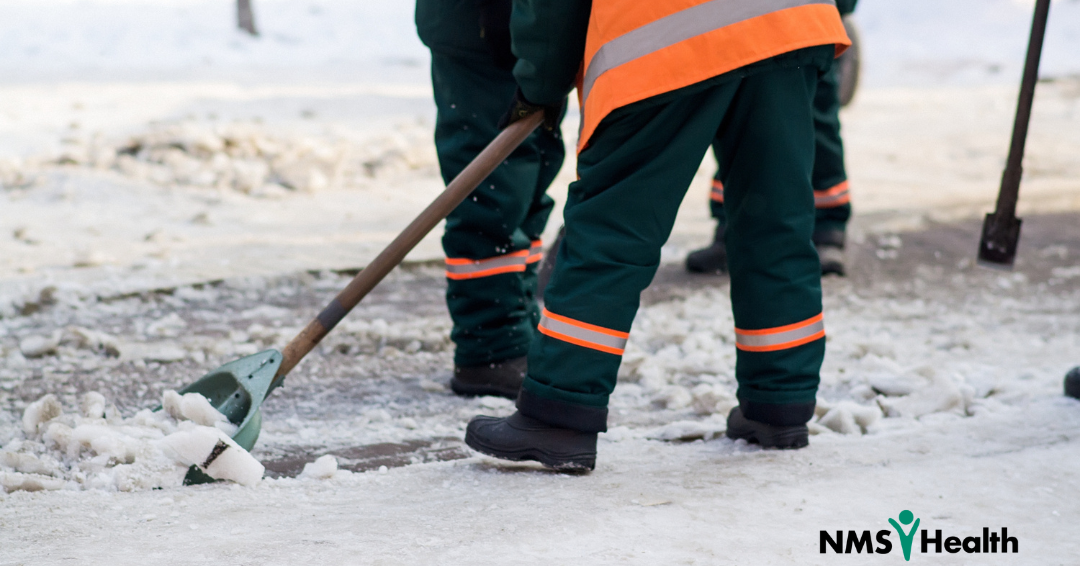While extreme heat conditions were a hot button issue this year, with OSHA going as far as to create a federal heat stress prevention rule, extreme heat is not the only weather-related workplace hazard. Working in harsh, cold weather presents a bevy of issues such as slips, trips, and falls which are responsible for 27% of workplace injuries and 15% of workplace related deaths. Winter weather can also be responsible for chilblains, frostbite, or hypothermia. In 2019, 32% of hypothermia-related deaths were occupationally related.
Exposure to cold can be an uncomfortable and potentially dangerous situation. Health emergencies can occur in people who work outdoors or in areas that are kept intentionally cold. Although OSHA has no set standard to specifically address cold weather working conditions, the agency does state that “employers have a responsibility to provide workers with employment and a place of employment which are free from recognized hazards, including winter weather-related hazards, which are causing or are likely to cause death or serious physical harm to them”.
Preventing Cold Stress Illness and Injuries
Employers have a lot of options to protect their workers from cold stress. When scheduling jobs that occur outdoors, employers should try to schedule these in warmer months, or at least during the warmest part of the day. Employers should also provide warm break areas and warm liquids. Limiting physical workloads which cause sweating and work schedules that require employees to stand or sit still for long periods of time in cold environments also helps protect employees from the elements. If employees do have to spend extensive time in cold or damp weather, employers should provide safe heat sources for these areas.
In indoor working environments, employers should install equipment to reduce drafts and condensation, rotate employees to different tasks after breaks, and provide glove alternatives, such as glove liners, for workers inside cold rooms.
When cold environments cannot be avoided, the Centers for Disease Control (CDC) suggests workers should follow these recommendations to protect themselves from cold stress:
- Wear appropriate clothing, including several layers of loose garments.
- Make sure to protect the ears, face, hands, and feet in extremely cold weather.
- Wear boots with insulation, waterproofing, and anti-slip treading.
- Move into warm locations during work breaks; limit the amount of time outside on extremely cold days.
- Carry cold weather gear, such as extra socks, gloves, hats, jacket, blankets, a change of clothes and a thermos of hot liquid.
- Include a thermometer and chemical hot packs in your first aid kit.
- Monitor your physical condition and that of your coworkers.
As an employer, it can also be helpful to review work practices, such as the use of the buddy system. “Using the buddy system when working in cold conditions is essential because hypothermia, frostbite, and other cold related injuries affect people differently. Teaching everyone to recognize signs of confusion, slurred speech, and shivering in themselves and others can help prevent injuries.” Training employees in the Fall by introducing cold weather tips and other outdoor cold weather safety concepts can help employees prepare for the upcoming season. Employees should be able to recognize the symptoms of cold stress and be prepared to recognize an emergency. Education and prevention are the best way to avoid cold stress and injury.
Sources
“Cold Stress.” Centers for Disease Control and Prevention, Centers for Disease Control and Prevention, https://blogs.cdc.gov/niosh-science-blog/2012/01/20/cold-stress/.
“Department of Labor.” Winter Weather - Cold Stress | Occupational Safety and Health Administration, https://www.osha.gov/winter-weather/cold-stress.
Karen D. Hamel Sep 01, 2018. “Winterizing Employees Who Work Outdoors.” Occupational Health & Safety, https://ohsonline.com/Articles/2018/09/01/Winterizing-Employees-Who-Work-Outdoors.


